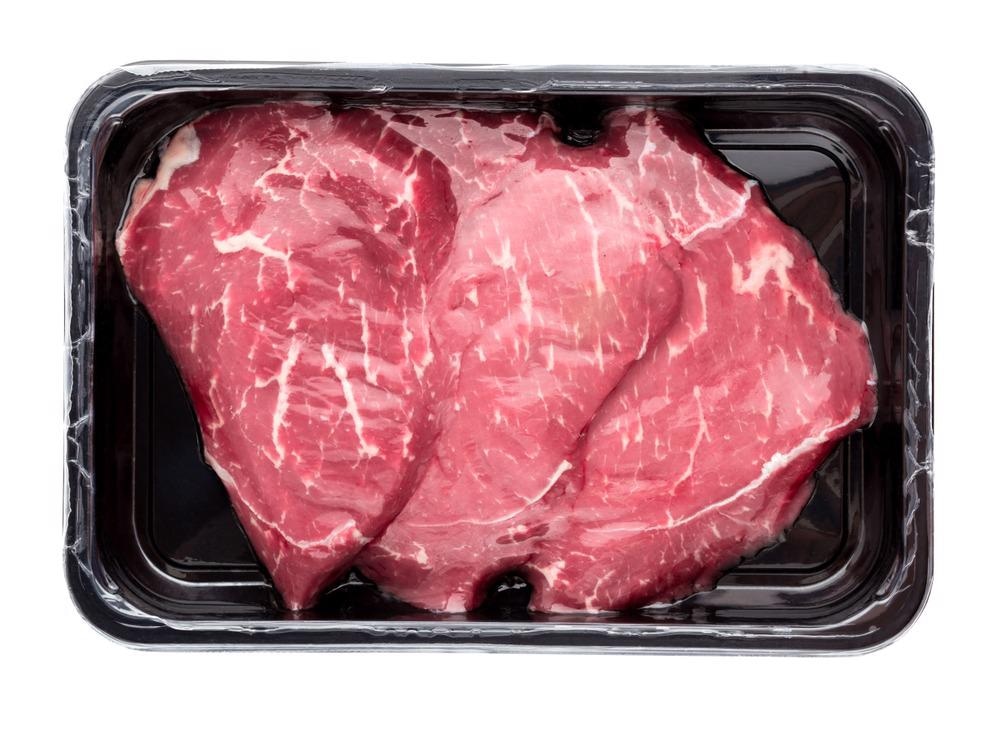Today, global meat consumption is around 350 million tons annually and this is set to further increase by 44% by 2030. As a consequence, significant amounts of plastic waste are produced from meat packaging, and not all of it is recyclable.

Study: Edible Films on Meat and Meat Products. Image Credit: Sergey Eremin/Shutterstock.com
Hence, a team of researchers at the National Institute of Animal Science have identified that there is a need to find alternative, environmentally friendly packaging materials that suit an expanding consumer market. The research was published in the journal Coatings.
“Petrochemical packaging materials which are widely used in the meat processing industry, take a long time to regenerate and biodegrade, thus they adversely affect the environment. Therefore, the necessity for the development of eco-friendly packaging materials for meat processing, which are easily degradable and recyclable, came to the fore,” stated Professor Kuk-Hwan Seol lead author of the study.
Therefore, Seol and his team recently evaluated the feasibility of the role that edible films could play in today’s meat market and whether these films could have viable application towards the ‘green’ preservation of meat and meat products.
Food Packaging
Today’s consumers are more environmentally aware and therefore on the lookout for products that are more eco-friendly, including what types of packaging their products come in. Manufacturers and food producers are aware of this and are often launching new packaging designs to meet customer needs, however, the majority of packaging materials derive from petrochemical-based plastics.
The majority of food packaging is designed to be single-use and is typically thrown away, with just 14% of all global plastic waste being recycled. According to the US Environmental Protection Agency (EPA), in the US alone food packaging and containers account for 14.5 million tons of waste, 69% of which was landfilled.
The global film and coatings market is being driven by some of these statistics, and the emphasis on producing packaging materials that can contribute towards waste reduction and reduce the carbon footprint of the global meat industry.
Importantly, food packaging plays a key role in the transportation and storage of products protecting them against mechanical intrusion, external agents, and contamination. Therefore, meat packaging should ensure the meat reaches the consumer in peak condition, offering the necessary antibacterial and antioxidant properties.
Edible Films and Packaging
The development of edible films for food packaging is aimed at protecting food products from any kind of oxidization, microbial contamination, and physical/mechanical damage as well as addressing concerns around waste production.
The concept of edible films evolved from environmental concerns, the increasing burden of plastic waste disposal, utilization of food industrial waste and consumer demands of natural, nutritional and healthy foods
Kuk-Hwan Seol, Professor and Lead Author, National Institute of Animal Science
Some edible films are produced using biopolymers, which have been regarded as potential replacements for petrochemical-based materials. Edible films can be wrapped around meat products and act as a barrier against external elements, thereby protecting the product and potentially extending shelf-life.
Producing edible films can be split up into two methods: dry and wet. The dry method is where heat is applied to edible and biodegradable materials to produce a form that can mold around the product: “The thermoplastic properties of the raw materials should be identified in order to design edible film manufacturing processes,” says Seol.
The wet process of edible film production uses solvents considered safe for consumption, such as water and ethanol, to dissolve film-forming materials into a solution. The solution is then applied to the surface or product ready for molding and subsequently dried to produce the protective film.
Common biopolymers used in these methods include starch, gum, cellulose, pectin, and alginate. Finding the blend of right materials is key and may include the use of milk proteins, plant proteins, and lipids to find the optimal packaging material.
Efforts are focused on developing the right combination of blended materials because the effectiveness of edible films for meat products depends on biopolymer types and bioactive compounds to enhance their functional properties
Kuk-Hwan Seol, Professor and Lead Author, National Institute of Animal Science
Protecting the Future
So, while meat remains an important part of the modern diet and seems to be on the rise, it is crucial that alternative packaging materials are used to limit the environmental impact of the meat industry.
This is a crucial consideration given the current climate crisis and the fact world leaders are meeting this week in Glasgow at the United Nations’ COP26 conference on climate change. Modifying and adjusting industrial production as a reflection of consumer habits and protecting the environment is a way of protecting the future.
In the conclusion of their evaluation, Seol and his team state that more work and further studies are needed for the development of edible films in order to meet market demand and stand up to the rigor of their petroleum-based counterparts.
References
‘Tons of Meat Eaten Globally This Year’. theworldcounts.com [https://www.theworldcounts.com/challenges/consumption/foods-and-beverages/world-consumption-of-meat/story accessed November 2021]
Song D-H, Hoa VB, Kim HW, Khang SM, Cho S-H, Ham J-S, Seol K-H. Edible Films on Meat and Meat Products. Coatings. 2021; 11(11):1344. https://www.mdpi.com/2079-6412/11/11/1344
Cross. D.J. ‘Revolutionary Chemical Polymer Recycling Method’, AZO Cleantech, November 2021. https://www.azocleantech.com/news.aspx?newsID=30522 accessed November 2021
United States Environmental Protection Agency. ‘Containers and Packaging: Product Specific Data’ 2019. https://www.epa.gov/facts-and-figures-about-materials-waste-and-recycling/containers-and-packaging-product-specific-data accessed November 2021
Disclaimer: The views expressed here are those of the author expressed in their private capacity and do not necessarily represent the views of AZoM.com Limited T/A AZoNetwork the owner and operator of this website. This disclaimer forms part of the Terms and conditions of use of this website.